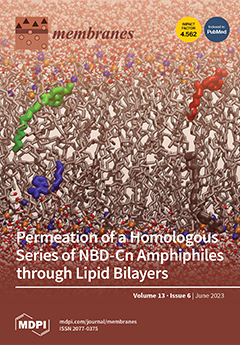Accelerated wound healing in infected skin is still one of the areas where current therapeutic tactics fall short, which highlights the critical necessity for the exploration of new therapeutic approaches. The present study aimed to encapsulate
Eucalyptus oil in a nano-drug carrier to
[...] Read more.
Accelerated wound healing in infected skin is still one of the areas where current therapeutic tactics fall short, which highlights the critical necessity for the exploration of new therapeutic approaches. The present study aimed to encapsulate
Eucalyptus oil in a nano-drug carrier to enhance its antimicrobial activity. Furthermore, in vitro, and in vivo wound healing studies of the novel nano-chitosan/
Eucalyptus oil/cellulose acetate electrospun nanofibers were investigated.
Eucalyptus oil showed a potent antimicrobial activity against the tested pathogens and the highest inhibition zone diameter, MIC, and MBC (15.3 mm, 16.0 μg/mL, and 256 μg/mL, respectively) were recorded against
Staphylococcus aureus. Data indicated a three-fold increase in the antimicrobial activity of
Eucalyptus oil encapsulated chitosan nanoparticle (43 mm inhibition zone diameter against
S. aureus). The biosynthesized nanoparticles had a 48.26 nm particle size, 19.0 mV zeta potential, and 0.45 PDI. Electrospinning of nano-chitosan/
Eucalyptus oil/cellulose acetate nanofibers was conducted, and the physico-chemical and biological properties revealed that the synthesized nanofibers were homogenous, with a thin diameter (98.0 nm) and a significantly high antimicrobial activity. The in vitro cytotoxic effect in a human normal melanocyte cell line (HFB4) proved an 80% cell viability using 1.5 mg/mL of nano-chitosan/
Eucalyptus oil/cellulose acetate nanofibers. In vitro and in vivo wound healing studies revealed that nano-chitosan/
Eucalyptus oil/cellulose acetate nanofibers were safe and efficiently enhanced the wound-healing process through enhancing TGF-β, type I and type III collagen production. As a conclusion, the manufactured nano-chitosan/
Eucalyptus oil/cellulose acetate nanofiber showed effective potentiality for its use as a wound healing dressing.
Full article






